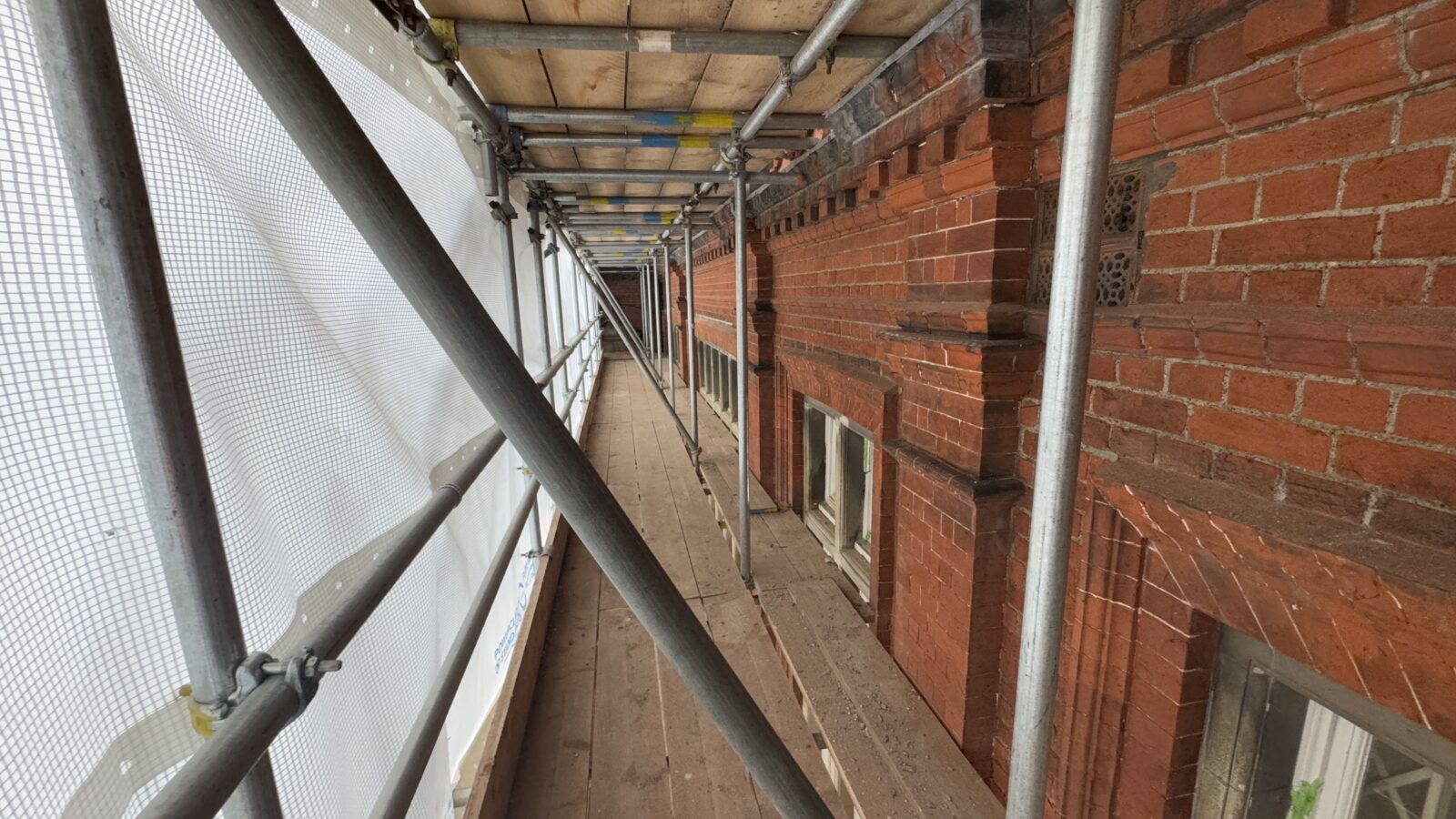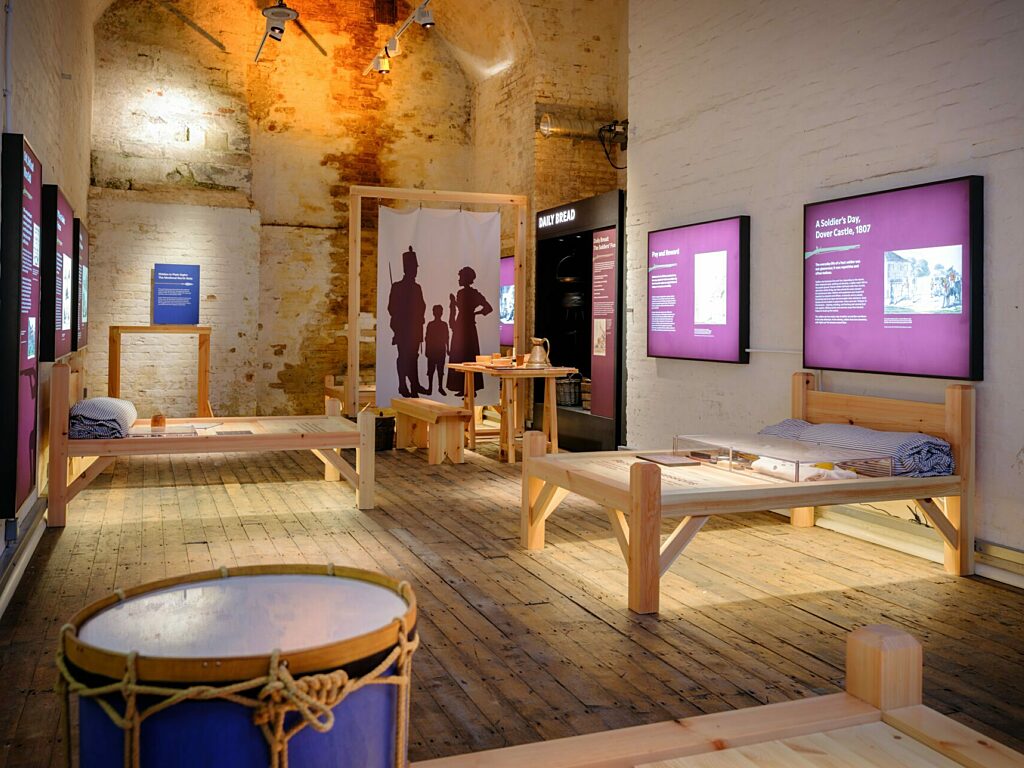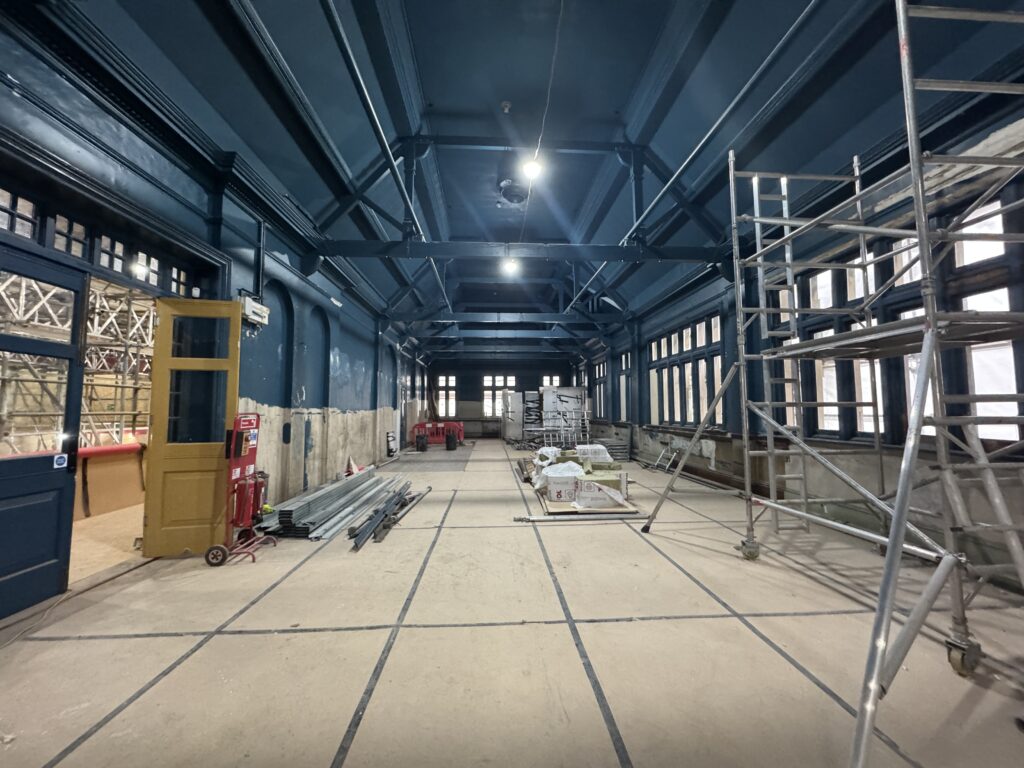The last couple of months have seen significant progress made on the construction stage of the redevelopment project, with the new internal layout beginning to take shape. This includes transforming areas of the Museum previously used as offices which have not been seen by the public before. When the Museum reopens, visitors will find some familiar rooms and be able to discover completely new spaces.
Externally, the scaffold and full temporary roof have now been completed and covered with protective monoflex sheeting to guard from the elements. The temporary roof is expected to be in place for a couple of months. The roof has been stripped of tiles, felt and battens to allow for new counter battens to be installed. These will provide ventilation with new breathable membrane and new tile battens. The external brickwork has been steam cleaned to get it looking its best, a process which took around 6 weeks to complete. Brick and mortar repairs are now in progress. Some damaged or weathered bricks have been replaced, while others have been repaired with a coloured mortar to match the colour of the bricks.
Inside the Museum, more internal walls have been removed and new steel beams inserted to create large openings for visitors to navigate through the galleries and improve accessibility. A stud wall has been erected in one of the galleries to form a corridor providing access to new conservation rooms. The new public toilets will be located in the old basement area and work has begun to connect them to the sewage pipes. To allow for the installation of a new grey water pump, a deep pit has been excavated in the basement. Additionally, carpentry works and lime plaster repairs have also been taking place.

As well as the key construction phase of the redevelopment, Ipswich Museum and Mather & Co have been working across many different areas to bring this project together.
This includes developing the content for each of the galleries in the Museum, including finalising the object lists for each gallery and refining the designs for the galleries such as the position of text panels. The team have also been writing the interpretive text for the galleries which will provide insight into the objects on display. The conservation team has been checking and, where necessary, cleaning and conserving items on the object list. Items needing specialist conservation from external conservators are also being identified so that the necessary conservation work can be carried out by specialists.
We’ll be sharing more updates on progress at Ipswich Museum over the coming months, revealing a behind the scenes look at this exciting project.




